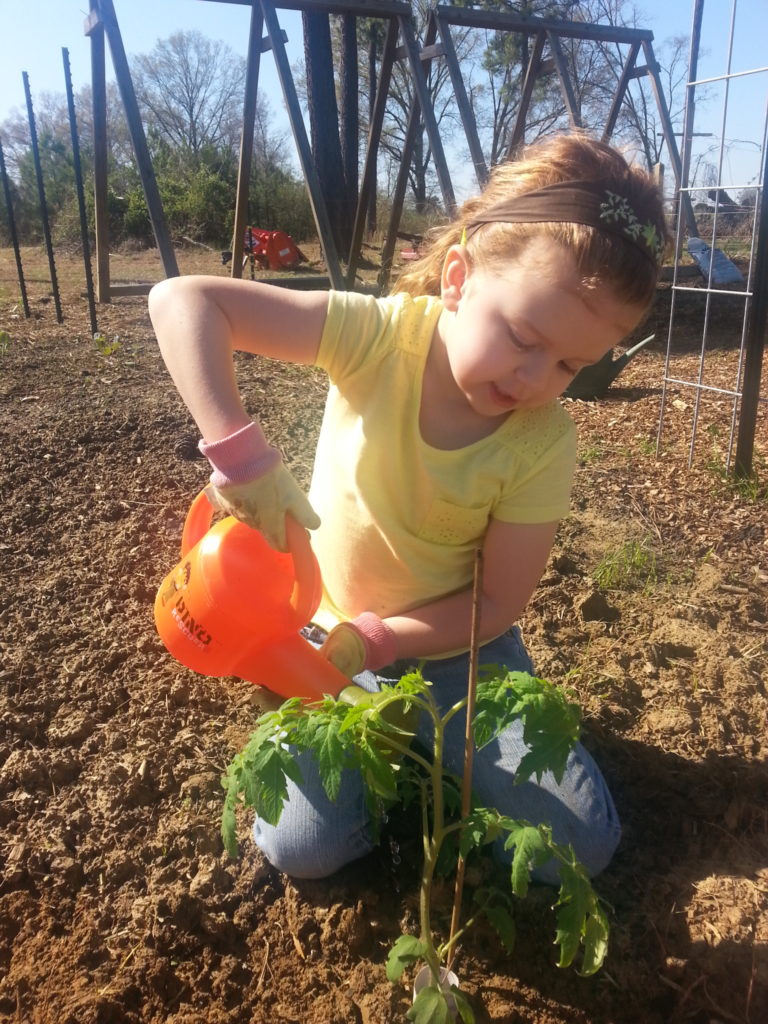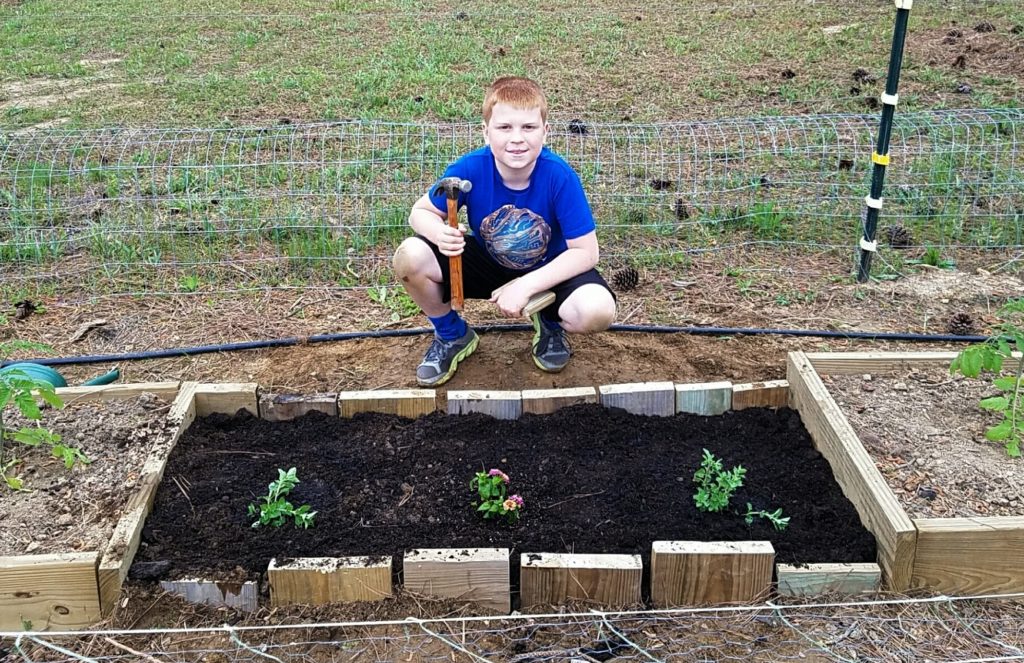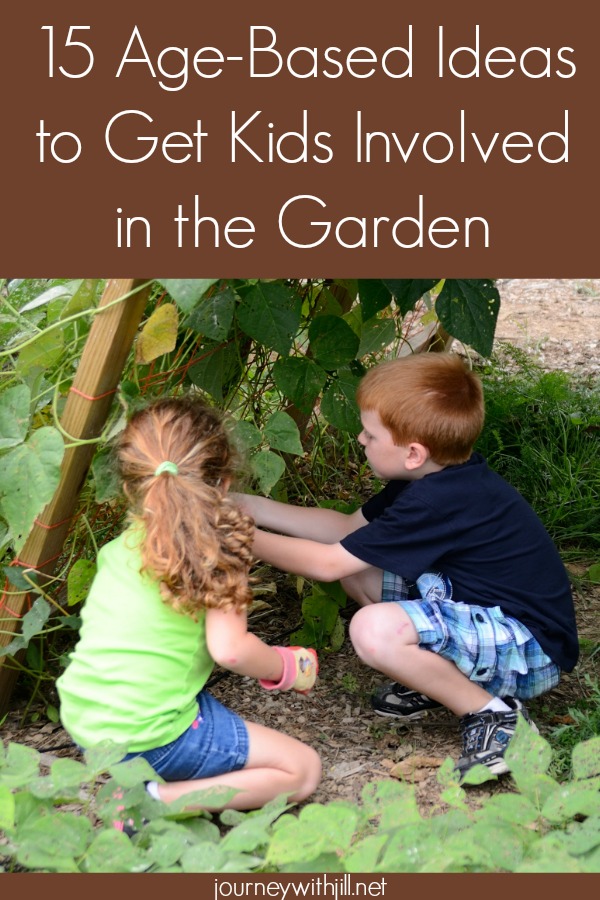Ideas to Get Kids Involved in the Garden — from Toddlers to Teenagers
I think we can all agree that getting kids involved in the garden provides many benefits to the children themselves, to the family, and to society. But at different ages, children require different kinds of learning and varying levels of supervision to help them get the most enjoyment out of tending to a garden.
I started my first garden when my children were ages 6 and 2. Now that they are approaching ages 12 and 8, I can look back and see what worked at different stages. In this episode of the Beginner’s Garden Podcast, I share what worked in my garden to get my kids involved each year depending on their age and interests. Click to listen, or read the post below.
Some links below are affiliate links, which means if you click through and make a purchase, I will receive a small commission at no extra cost to you. Thank you for your support.
Kids in the Garden: 15 Age-Based Ideas
Ages 1-4
In the early years, many times you’ll have to take your kids with you in the garden as a matter of safety. (You wouldn’t leave a 2-year-old in the home alone.) But while you’re working in the garden, you can give your child a shovel and let him dig and explore while you work in the garden alongside him. While his hands and feet turn brown, he’ll begin learning about earthworms, beetles, toads, and other life in the garden in addition to the fruits and vegetables.
Children this age can plant larger seeds that their fingers can easily grasp, such as beans, peas, and watermelon. Just dig the furrow yourself and tell her where to place the seed. Teach her how to cover it up and water it with her own watering can, and she’ll delight in seeing it grow in a few weeks!
At this age, children can also begin harvesting some of the easier crops like blueberries, strawberries, and beans. Teach him how to know when a strawberry is ripe. Show her how to grasp and pull a green bean without breaking the stem. Soon, you’ll have extra hands to help you in the busy harvest season!
My children also enjoyed their own garden toys, like these:
amzn_assoc_placement = “adunit0”;
amzn_assoc_search_bar = “true”;
amzn_assoc_tracking_id = “journeywithji-20”;
amzn_assoc_ad_mode = “manual”;
amzn_assoc_ad_type = “smart”;
amzn_assoc_marketplace = “amazon”;
amzn_assoc_region = “US”;
amzn_assoc_title = “My Amazon Picks”;
amzn_assoc_linkid = “f9bc3aef5004ae4806dbd946572f7b25”;
amzn_assoc_asins = “B06XZW74LC,B00005BW71,B00B0DW9N2,B00025EIZG”;
Age 5-8
Kids in the elementary years can be given a bit more responsibility in the garden.
One year I gave my kids, age 8 and 4 at the time, their own raised beds. With my guidance, they chose the crops they wanted to grow and planted the seeds and transplants themselves.
This is an ideal time to introduce responsibility and let their individuality come alive in the garden. While tedious chores like weeding might be too much to expect, having supervised gardens of their own will provide a rewarding, educational experience.
But even if you don’t give your kids their own garden space, there are tasks they can tackle at this age.
Get them their own gloves, watering can, garden boots, or wheelbarrow. My kids especially enjoyed this kid-sized wheelbarrow, and it has come in quite helpful for me, too!
As their fine motor skills progress, elementary-aged kids can begin planting smaller seeds like okra, corn, beets. They can also help you transplant vegetables like tomatoes and peppers, as you teach them how to add ingredients to the planting hole and how to water.

If you have flowers, herbs, vegetables, or fruit growing in containers, you can place your 5-8 year-old in charge of keeping them watered. Although they will need a bit of guidance of how much to water (not too much, not too little), they can get the hang of it pretty quickly.
Age 8-10
As children get older, they can start doing more advanced garden work like digging furrows and weeding the garden. (I’m not promising they’ll like the weeding any more than we do, though).
Now that their fine motor skills are more developed, yet their hands are still small, you can put them in charge of planting small seeds like carrots and lettuce. They may actually do a better job than you might because their fingers are more able to grasp those tiny seeds!
When it comes to harvesting, children this age can harvest crops that demand more care or require clippers, such as tomatoes, peppers, cucumbers, and squash.
This is also an ideal time to start getting kids involved in using the harvest. They can do the pre-work involved in cooking, canning, and freezing. My kids enjoy shelling peas and black-eyed peas, snapping green beans, and using the Kitchen Aid Mixer to prepare tomatoes for canning as I show in this video:
Age 10 & Up
At this age, children who have grown up with a garden may begin to lose the interest they showed in the early years (though first-time gardeners at this age still enjoy the wonder of it all). But, all isn’t lost; you just have to get more creative.

Adapt to the child’s natural interests. Boys and girls both may enjoy helping you build a raised bed, installing a watering system, setting drip lines, or building a garden trellis. They also may want to choose flowers at the garden center and plant them.
Older kids thrive when given more individual responsibility, especially when they are allowed space for personal creativity. Not only do they want to learn and take ownership in their work, they also thrive when adults supervising them give them respect for their own and their own knowledge. This can be an ideal age for budding creativity in the garden.
Measuring Success — Not What You Think
I think the biggest lesson I’ve learned in six years of gardening with my children is to enjoy the little moments and don’t expect too much. Most evenings, I head out to the garden alone while my kids jump on the trampoline or swim in the pool. But usually it’s not long before one of them joins me in the garden, if for nothing else than to see the progress. I’m good with that. Kids are kids and they may not enjoy the garden like I do, but they’re still participating, exploring, learning, and enjoying the progress. And that’s success in my view.
What other tips would you give to help kids enjoy participating in the garden?
Do you get overwhelmed with garden planning?

Subscribe here for my best tips to plan your garden in just 7 days -- all for FREE.
Plus, I'll send you my "In the Garden E-mail" on Fridays, periodic updates on garden resources relevant to you, and you'll receive access to my entire bank of free garden downloads!
You are also agreeing to our privacy policy.

